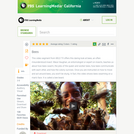
In this video segment from WILD TV, learn about bees and the different techniques for handling them.
- Subject:
- Arts and Humanities
- Material Type:
- Lecture
- Provider:
- PBS LearningMedia
- Provider Set:
- Teachers' Domain
- Date Added:
- 08/26/2008

In this video segment from WILD TV, learn about bees and the different techniques for handling them.
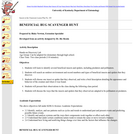
Students learn to identify several beneficial insects and spiders, including predators and pollinators, then record numbers and types of beneficial insects and spiders that they discover in the outdoors, and discuss ways that the insects and spiders that they observed are adapted to be pollinators or predators.

Learn about one town's conflict over the issue of spraying pesticides to combat disease-carrying insects, in this video segment from Greater Boston.
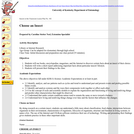
Students will use books, encyclopedias, magazines, and the Internet to discover certain facts about an insect of their choice.

This online directory of professional entomological societies covers the entire country. For each resource, contact information, including a link to its Web site, is provided. The list is divided into the following categories: general resources, national headquarters, Northeast, Mid-Atlantic, Southeast, South, Midwest, and California and Hawaii.
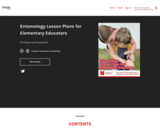
This is a collection of lesson plans on entomology for elementary educators

Lesson 1 introduces students to the blow fly's life cycle and the accumulated degree hour (ADH) used by forensic entomologists for estimating the time of death. Lesson 2 introduces Dr. Krinsky's entomological work in solving a murder case in 1986. Students access several primary-source documents related to Dr. Krinsky's entomological work. Both lessons help students expand their understanding of a forensic entomologist's work and appreciate how scientists account for environmental/variable factors in forming a conclusion in a scientific study.
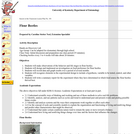
Students will make observations of the behavior and life stages in flour beetles.

This illustrated guide to a grasshopper's head is designed to help students recognize and learn the many parts found on an insect's head. The single Web page, which can be easily printed for use at field sites or in the lab, also includes a short description for the following labeled parts: ocellus compound eye antenna gena frons clypeus mandible labrum labium palps.
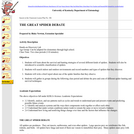
Students go on a "spider safari" to find spiders around the house, yard, garage, or barn and observe their ways of life, then they return to the classroom to debate the pros and cons of the web-making way of life versus the roaming hunter lifestyle.

In this lesson, we learn how insects can fly in the rain. The objective is to calculate the impact forces of raindrops on flying mosquitoes. Students will gain experience with using Newton's laws, gathering data from videos and graphs, and most importantly, the utility of making approximations. No calculus will be used in this lesson, but familiarity with torque and force balances is suggested. No calculators will be needed, but students should have pencil and paper to make estimations and, if possible, copies of the graphs provided with the lesson. Between lessons, students are recommended to discuss the assignments with their neighbors.
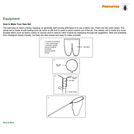
In this Biodiversity Counts activity, students create their own aerial insect net using common and inexpensive supplies: net fabric, a coat hanger, a wooden handle, duct tape, a sewing needle, and thread. The online activity page includes illustrated step-by-step directions and a brief introduction to the use of fabric nets.
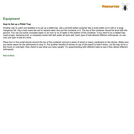
In this Biodiversity Counts activity, students learn how to create and set up a pitfall trap to catch soil dwellers. The online activity page includes easy-to-follow directions for building a trap with recycled plastic containers, stones, wood/cardboard, and a bait of the students' choosing. Students let the trap sit either for a few hours or overnight to see what they have caught. To expand their investigation, students are challenged to experiment with different baits to see if they can attract different arthropods.
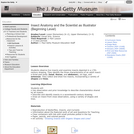
Students observe live insects and examine insects depicted in a seventeenth-century drawing. They identify the three characteristics of an adult insect: a three-part body (head, thorax, and abdomen), six legs, and antennae. They collect and draw live insects, incorporating a variety of shapes and lines.
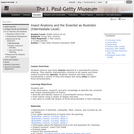
Students observe and study insects depicted in a seventeenth-century drawing. They identify characteristics common to all insects and those unique to particular species. Students research and draw insects, incorporating a variety of lines and shapes and using value to depict three-dimensionality.
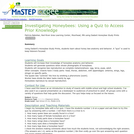
This activity is a presentation of honeybee anatomy and behavior.

Since 2016, the Urban Ecosystem Project (NIH-SEPA R25 GM129210) has been using entomological inquiry in out-of-school settings to engage historically-underserved upper-elementary youth and their educators from communities and schools in the urban core of Des Moines, Iowa USA.
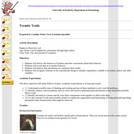
Students will observe the behavior of termites and draw conclusions about their behavior.

The University of Florida Book of Insect Records (UFBIR) names insect champions and documents their achievements. Each chapter deals with a different category of record.
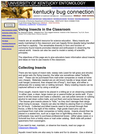
Insects are an excellent resource for science education. Many insects are easily maintained in the classroom and can happily thrive despite being handled and kept in captivity. The remarkable diversity in form and function of commonly found insects promotes interest and enthusiasm in observing the natural world. Insects can also be used to model a variety of scientific principles.
The objectives of this page are to give educators basic information about insects and ideas on how to use insects in the classroom.